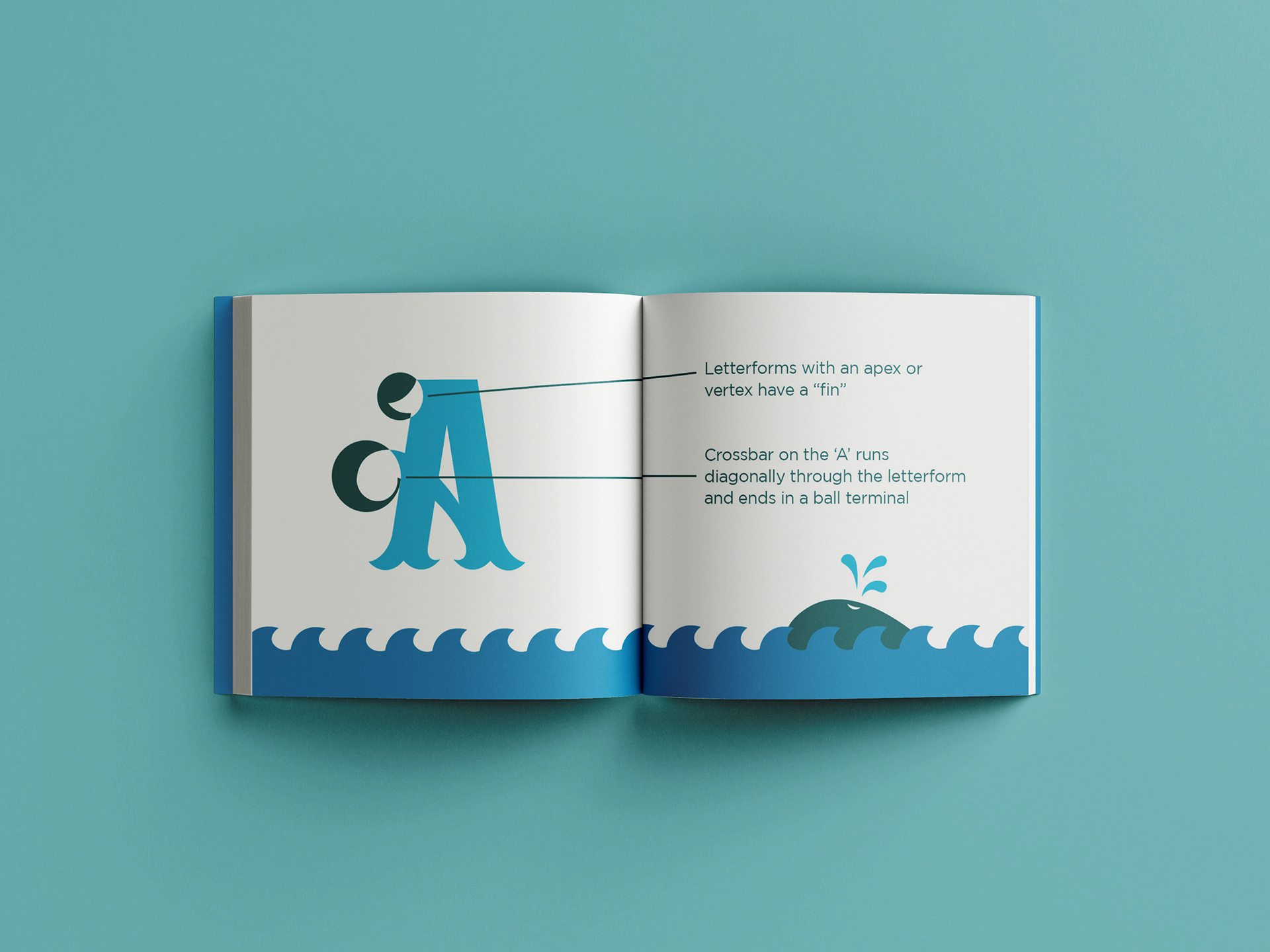Design Objective: Using knowledge of type anatomy, create a unique typeface design. Specify the classification and use known relationships between letterforms to create a cohesive typeface design. Create a type specimen poster and booklet showcasing the unique typeface anatomy.
Design Brief: Cetacea is a decorative serif typeface with unique features. The serifs on the end of each letterform are curved out on either side to a point, and where they meet in the middle, they curve down. In this way, the serifs mimic the look of a whale tail. The name Cetacea is the scientific term for the class of aquatic mammals such as whales or dolphins. This typeface is capital letters only and should be used as a display typeface. The stroke weight varies from the vertical strokes to the horizontal strokes of letters such as K, Z, L, and F. There are several decorative elements to the design such as the crossbar in the A and the tail of the Q. The counters shown in the letterforms O, B, P, R, and Q are small and appear to be swallowed by the heavy stroke weight. The booklet and poster use the word WHALE to showcase the type anatomy of Cetacea.




